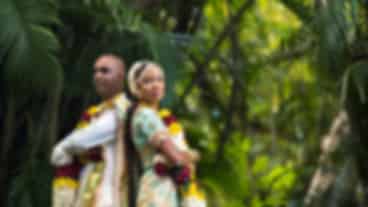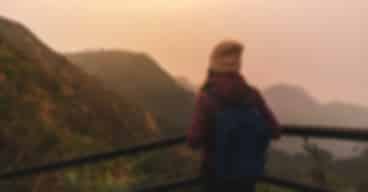Junagarh Fort Bikaner: History, Architecture, Attractions & More
Author
Chandru
Updated Date
February 21, 2025
Read
7 minutes

The Junagarh Fort Bikaner is a massive fort in the heart of the city. It is considered to be one of the top attractions in Bikaner. It was earlier referred to as Chintamani. In the 20th century, the Junagarh Fort was renamed. The new sections of the city was built around this fort, nearly 1.5 km away from the city centre. The fort houses several temples, pavilions and palaces, covering an area of 5.28 hectares. Some of the interesting facts about Junagarh Fort has been mentioned below.
Inside the fort, you will be able to find major temples like the Ratan Behari Temple and the Har Mandir Temple. You can also visit the palaces inside the fort-like Karan Mahal, Anup Mahal, Ganga Mahal, Phool Mahal, Badal Mahal and Chandra Mahal. There are also a few Bikaneri Havelies within as well as outside the fort, which are worth a visit. The famed Junagarh Fort Museum is also a must-visit when visiting this place to get a glimpse at the history of the city.
Junagarh Fort: History

Junagarh Fort
One of the interesting facts about Junagarh Fort is that it was built between 1588-1593 AD by Raja Rai Singh. The fort complex was constructed under the guidance of his prime minister, Karan Chand. Earlier the fort was named Chintamani and later it was renamed to Junagarh which indicates old fort. The fort has witnessed many attacks and still stands strong. The modern city of Bikaner is developed around this majestic fort.
Junagarh Fort: Architecture

Junagarh Fort in Bikaner
Junagarh Fort, is one of few forts in Rajasthan which is not built on the hilltop. Spread in an area of about 5.28 hectares, this fort has beautiful palaces built with white marble and red sandstones, temples, and pavilions. So, the fort has a mixed style of architecture representing various cultures and traditions. Roughly around 37 palaces are there in the fort with beautiful courtyards and balconies. These are adorned with classical style paintings and artworks.
Junagarh Fort: Attractions

Bikaner Architecture
Two main gates of the fort are Suraj Pol and Daulat Pol. Daulat Pol is unique as it has handprints of women who have undergone Sati during earlier years. You can also witness the mirror work, lacquer work and stunning paintings of the Indian art and the previous rulers of Mewar. Other prominent places within the fort include Badal Mahal, Chandra Mahal, Anup Mahal, Phool Mahal, Har Mandir, and Prachina Museum. The museum showcases the grandeur of Indian rulers and kings like the artefacts, jewellery, weapons, carpets and various other things.
Suggested Read: Chittorgarh Fort – Revisit the Times of Elegant Rani Padmavati
This place tops the list of favourites among historians and architectural enthusiasts, due to its mix of architectural styles and the use of beautiful red sandstone. The location of Junagarh Fort is another interesting fact about it for tourists since it rests on the dry Thar Desert, bordered by the Aravalli Mountain Range in the background. Make sure to visit this place at least once when you are here.
Junagarh Fort: How to Reach
Becoming one of the most visited cities of Rajasthan due to its proximity to the Thar Desert and its innumerable historical attractions. One of the most popular sites to visit in the city is the Junagarh Fort, a massive construction located very close to the city centre.
Due to its proximity to the city centre, it is very comfortable to get to Junagarh Fort. The fort is located very close to the railway station, hence you can get here by auto-rickshaws, buses and private vehicles. It lies a little more than a kilometre away from the railway station, which can be covered within 10 minutes. There are autos and cabs available right outside the railway station. You can also take the bus from the railway station to get to the fort. But the bus service here is not very regular and at times there are huge time gaps between buses.
Junagarh Fort: Entry Fee
The ticket price for visiting Junagarh Fort in Bikaner is Rs 50 per person for Indians and Rs 30 per person for Indian students. The entry fees would be Rs 300 per person for Foreigners and Rs 150 per person for foreigner students.
Junagarh Fort: Timings
The Junagarh Fort in Bikaner is open throughout the week from 10:00 am to 4:30 pm.
Junagarh Fort: Tips
- Remember to carry your own water bottles when visiting the fort since you won’t find any shops inside.
- Carry an umbrella as a protection to avoid sunburn.
- Don’t forget to pay a fee to take your camera inside. You can buy it from the ticket counter itself.
- Remember to wear comfortable shoes as a lot of walking is involved.
- Take a look at the famous pieces of art and paintings that are displayed at the museum.
- Visit the armoury section which houses the most extensive collections of weapons from the medieval age.
- Have a glimpse at the silver carriages and the carts that the Rajasthan royals used while travelling from one place to another.
- Wonder at the unbelievable zari work on the royal clothes.
- Do not forget to click photographs outside the museum while posing in the gorgeous Rajasthani clothes at a nominal fee.
- There are some spots within the fort where flash photography or even non-flash photography is prohibited. So, you need to keep your eyes open to look out for the signs so that you do not have to pay a fine on getting caught by the guards.
Conclusion

Bikaner Fort
The Junagarh Fort in Bikaner is deep in culture and heritage. The walls of the fort echo the stories of valour and victory that have got trapped within these unconquerable walls of the fort over so many centuries. The architecture of the fort symbolises the influence of various forms of architecture that have been spotted in India so far. So, this fort is a must-visit for every lover of history and architecture as it stands strong as a valid recognition of both. Plan a visit to your dream destination with Pickyourtrail to witness magic with your loved ones.
Indian Tourism Useful Resources
Andhra Pradesh Tourism | Uttarakhand Tourism | Sikkim Tourism | Andaman Nicobar Tourism | Rajasthan Tourism | Goa Tourism | Lakshadweep Tourism | Telangana Tourism | Meghalaya Tourism | Kashmir Tourism
Places to Visit Useful Resources
Places to Visit in Uttarakhand | Places to Visit in Goa | Places to Visit in Kashmir | Places to Visit in Rajasthan| Places to Visit in Sikkim | Places to Visit in Andaman Nicobar | Places to Visit in Meghalaya | Places to Visit in Andhra Pradesh | Places to Visit in Lakshadweep | Places to Visit in Telangana
Things to do Useful Resources
Things to do in Goa | Things to do in Andaman Nicobar | Things to do in Kashmir | Things to do in Lakshadweep | Things to do in Sikkim | Things to do in Meghalaya | Things to do in Rajasthan | Things to do in Uttarakhand | Things to do in Andhra Pradesh | Things to do in Telangana
Best Time to Visit Useful Resources
Best Time to Visit Kashmir | Best Time to Visit Andaman Nicobar | Best Time to Visit Goa | Best Time to Visit Sikkim | Best Time to Visit Rajasthan | Best Time to Visit Lakshadweep | Best Time to Visit Meghalaya | Best Time to Visit Uttarakhand | Best Time to Visit Andhra Pradesh | Best Time to Visit Telangana
Recommended articles for you
Discover Packages


Need help in planning?
Talk to our Travel Experts






























